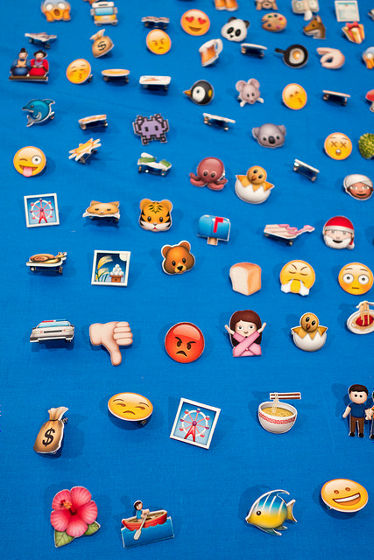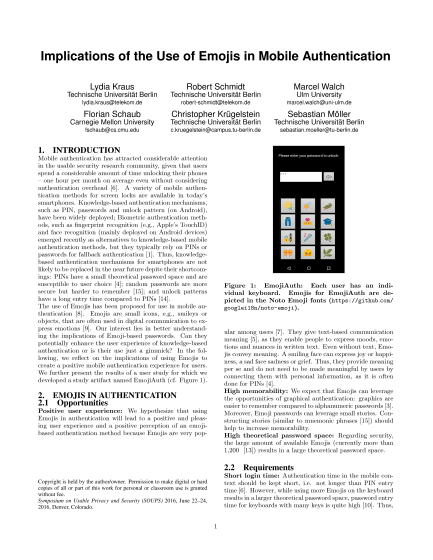Research using pictograms as a smart password

ByTheus Falcão
Many people use the combination of numbers "PIN" to unlock smartphones, but they are used around the world as an alternative to unlocking thisEmoticonsWe are studying how to use.
Why emojis might be your next password
http://theconversation.com/why-emojis-might-be-your-next-password-76973
Your next password could be a string of EMOJI | Daily Mail Online
http://www.dailymail.co.uk/sciencetech/article-4470568/Your-password-string-EMOJI.html
This research is carried out by research teams of researchers at Berlin Institute of Technology, Ulm University and University of Michigan. We developed a dedicated login system for Android "EmojiAuth" to evaluate the usefulness of emoji in terminal unlocking It is verifying.
Login methods such as fingerprint authentication and iris authentication have been used for the latest smartphones, but even when those methods can not be used, it is still possible to use a login method using a combination of letters of the alphabet and a combination of numbers The PIN code used is used. However, it is not easy to enter the alphabet string on the screen of the smartphone, and it is impossible to say that the PIN code of 4 to 6 digits is also highly secure from the viewpoint of crime prevention. Therefore, the research team is promoting research on a highly secure login method by using emoticons that are harder to distinguish than numbers and letters that are easy to remember.
In the initial verification, we divided 53 participants into 27 people in the "Use Emoji" group and 26 people "use PIN" and conducted experiments. Then, in the group using pictograms, it was said that there were mainly three patterns of "People who use patterns on pictogram keyboard" and "People who use favorite pictograms themselves", and "Remember by making stories with pictograms" Thing. One participant seems to have devised a method to input corresponding pictograms while singing a song that is in their head.

Participants then entered passcodes again in the same way with a week's time and confirmed how much they remembered. Then, both methods remained in the memories of the participants, but the person who used the PIN code than the pictograph was slightly higher in accuracy. However, it is clear that people who used pictograms enjoyed entering passcodes rather than PIN codes.
Forty-eight subjects participated in the next experiment and were divided into two groups for verification. The research team installed a function to let participants' Android smartphones display the login screen for canceling the mail application, and let me verify the method of letting half lock the pictogram with half and PIN code over the two weeks Thing.
Then, as in the first time, users in the pictogram group settled in a way to input in three patterns. Furthermore, as in the last time, it is said that the retention rate of memory is the same for both pictograms and PIN codes, and that the group using pictograms was enjoyable.

ByScott Beale
However, the method using pictograms said that the risk of leakage of passcodes due to "stealthy" was lower. In the third verification, I verified that I learned by remembering the passcode entered by the researcher from the back to the participants, but as a result, there is a method of letting six kinds of pictograms randomly displayed and selecting , It turned out that it was the most awkward way to remember and was difficult to remember. On the other hand, we know that it was relatively easy to remember how to unlock using 4 or 6 emoji patterns, or 4 or 6 digit numbers.
Thus, it can be said that the unlocking method using pictograms is equivalent to the conventional PIN code, or in some cases even higher security, and furthermore, it has the feature of "being able to enter more fun" . Papers by the research team can be viewed from the following links.
(PDF)Way_2016_paper_kraus.pdf

Related Posts:







